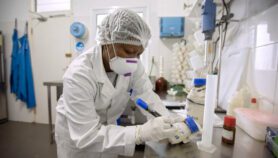Send to a friend
The details you provide on this page will not be used to send unsolicited email, and will not be sold to a 3rd party. See privacy policy.
China is rapidly becoming a regionally-networked scientific superpower that does not merely rely on links to European and US institutions that have traditionally led the science world, says Jonathan Adams.
The country’s spending on science research and development between 1995 and 2006 grew at an annual rate of 18 per cent — faster than any European country and slower only than Japan and the United States.
Last year, China produced more than 120,000 research articles, up from 20,000 in 1998, second only to the United States.
And although, as an industrial country, China has predictably focused on physical sciences and engineering research — it produces 20 per cent of global material science research — there is evidence that it is diversifying its research base, says Adams.
Agricultural research is expanding and biomedical science is rapidly gaining interest. If growth in biomedical research is as fast as it has been elsewhere, China will make profound impacts on gene and protein research, says Adams.
He argues that China will undeniably become the world’s greatest producer of scientific knowledge.
And it is not operating behind closed doors, he says. Nearly nine per cent of papers from Chinese institutions have a US-based co-author. Collaborations with South Korea almost trebled between 2004 and 2008 and collaborations with Australia may signal an emerging Asia-Pacific regional network, suggests Adams.
He argues that Europe and North America will have to adjust to this new scientific world order — it is not a question of whether we should collaborate with China, he concludes, but what we can offer China to ensure it collaborates with us.













